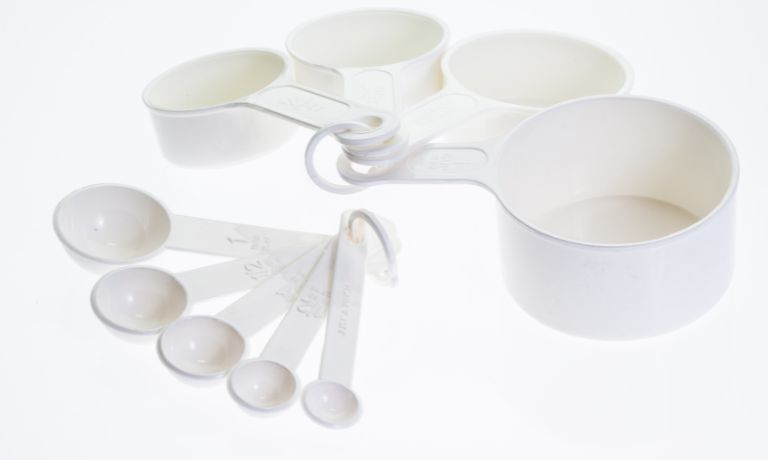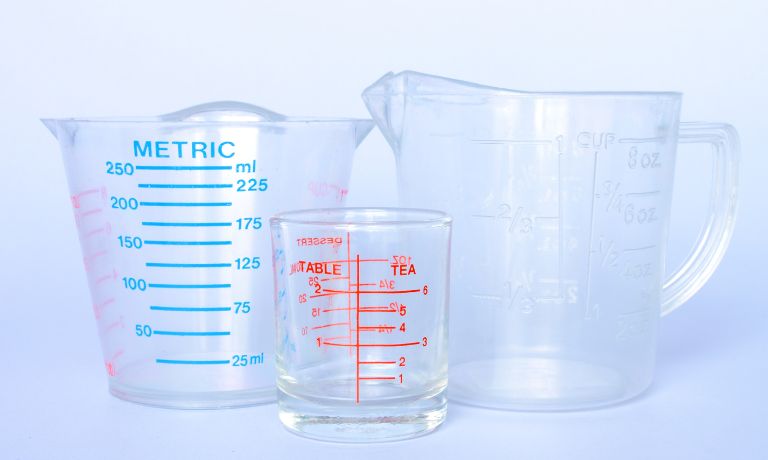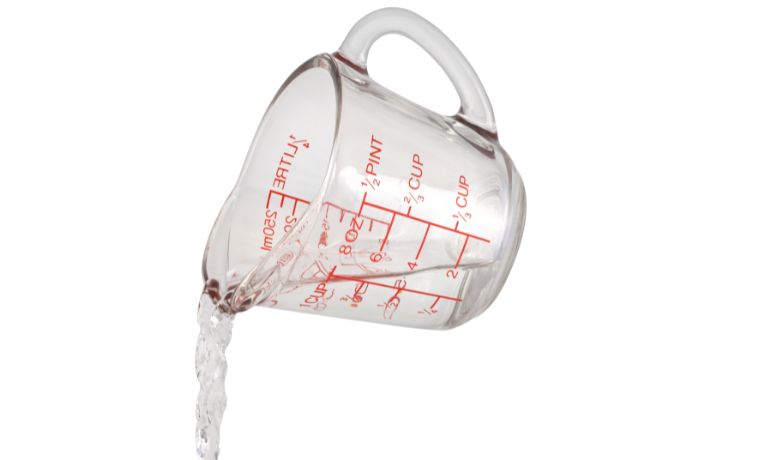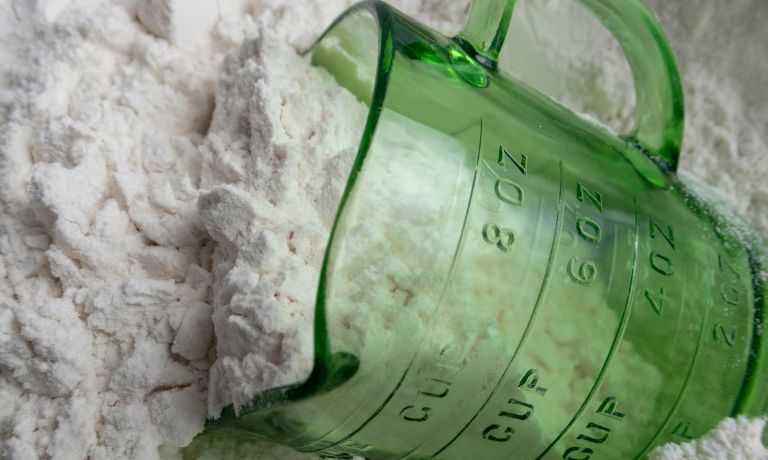If you’re an avid baker or shop at the grocery store often, chances are that you’ve seen measurements for ingredients in both cups and pounds. This blog post will dive into this conversion to help answer the question, “How many cups in a pound?”
With this blog post, we will explore the different measurements and conversions associated with one pound of various baking ingredients. We’ll provide tips on accurately calculating ingredients and review the importance of precise measuring.
Read on for more information about how many cups are in a pound and stay tuned for upcoming posts where we’ll delve further into precision measurement techniques.
What Is A Pound?
A pound is a unit of weight in both the imperial and US customary systems. In the imperial system, it is equal to 16 ounces, or 453.592 grams. In the US Customary system, it is equal to 14.5939 ounces, or 454 grams. It is sometimes abbreviated to “lb” for short.
Pounds are commonly used to measure the weight of animals such as horses and cattle, and it is also used in food measurements, such as a pound of butter or sugar.
It is also sometimes used to measure fuel consumption, such as a gallon per mile (GPM). This type of measurement is particularly useful when comparing different vehicles’ fuel efficiency.

Pound unit
What Is A Cup?
A cup is a measuring unit of volume in both the imperial and US customary systems. In the imperial system, it is equal to 8 fluid ounces, or 236.588 milliliters. In the US customary system, it is equal to 8.3234 fluid ounces, or 240 milliliters.
A cup can also refer to an informal measurement of volume which is slightly different from its more technical measurements mentioned above; this measurement usually consists of two-thirds of a standard cup.
Cups are commonly used in recipes for dry ingredients such as flour or sugar, as well as wet ingredients like milk or water. It is also used for measuring liquid volumes for beverages, such as coffee or tea.
A cup can also be used in many countries as a unit of measurement for fuel consumption, such as miles per gallon (MPG). This type of measurement is particularly useful when comparing different vehicles’ fuel efficiency.
In summary, while both pounds and cups are units of measurement, they have different meanings depending on the context in which they are used. Pound is typically used to measure weight while cup is usually used to measure volume.

Cups
The Differences Between Uk Cups And Us Cups?
The difference between UK cups and US cups is mainly in the amount of fluid ounces each cup contains. In the UK, one cup equals to 236.59 milliliters. Whereas in the US, one cup is equal to 284.13 milliliters.
It’s important to remember that when converting between different measurement systems, there may be slight discrepancies due to rounding errors. For example, a UK cup might hold slightly more than an American cup if rounded off to the nearest tenth or hundredth of an ounce.
In addition, some recipes will specify whether the measurements should be made in imperial or US cups. It’s important to pay attention to this detail when following a recipe, as using the wrong measurement system can result in an incorrect outcome.
How Many Cups In A Pound?
You have read what is pound and what is cup, so how many cups in a pound? How many cups in a lb?
The answer is that it depends on what type of measurement system you are using. In the US customary system, a pound will equal 2 cups, while in the imperial system, a pound will equal 1.66 cups.
For example, if you are measuring a pound of sugar in the US customary system, you will need 2 cups to equal 1 lb. Whereas if you are using the imperial system, you would need 1.66 cups to equal a pound.
Note that this measurement does not apply to all types of ingredients. For example, when measuring liquids such as milk or water, it is common to use milliliters and liters instead of pounds and cups.
How Do You Convert Pounds To Cups?
To convert pounds to cups, you will need to identify which measurement system your recipe uses and then use a conversion chart or calculator.
For example, if you are using the US customary system, you can use the formula 1 lb = 2 cups. This means that 1 pound is equal to 2 cups and thus if you have 4 pounds of something, that would be equal to 8 cups in total.
On the other hand, if you are using the imperial system for measurements, then you would use the formula 1 lb = 1.66 cups. This means that for every pound, there are 1.66 cups of whatever ingredient you are measuring. So if you had 4 pounds of something, this would equate to 6.64 cups in total.

Types of measuring cups
How Do You Convert Cups To Pounds?
To convert cups to pounds, you will need to identify which measurement system your recipe uses and then use a conversion chart or calculator.
For example, if you are using the US customary system, then you can use the formula 1 cup = 0.5 lb. This means that for every cup of whatever ingredient you are measuring, it is equal to half a pound. So if you had 4 cups of something, this would equate to 2 lbs in total.
On the other hand, if you are using the imperial system for measurements, then you would use the formula 1 cup = 0.6 lb. This means that for every cup of whatever ingredient you are measuring, it is equal to 0.6 lbs in total. So if you had 4 cups of something, this would equate to 2.4 lbs in total.
Which One Should We Use, The US Cups Or The UK Cups?
Which measurement system you should use depends on where your recipe originated from. If the recipe is from the US, then it would be best to use the US customary system for measurements. Conversely, if the recipe is from the UK or another imperial system country, then it would be best to use the imperial system for measurements.
In summary, when measuring ingredients in recipes, remember to identify which measurement system you are using and convert accurately between different units of measure such as pounds and cups.

Cup
How Do You Measure Out A Pound Of Ingredients?
When measuring out a pound of ingredients, you should use precise measurements for the best results. The easiest way to do this is to use a kitchen scale.
Place the container on the scale and set it to zero if necessary. Then add the correct amount of ingredients until you reach one pound. If your recipe calls for fewer than one pound, simply measure out small amounts using teaspoons or tablespoons until you have reached the desired weight.
For example, one tablespoon is equal to 1/16 of a cup which can help make sure your measurements are accurate. Alternatively, you can also use measuring cups to measure out a pound of ingredients by filling up each cup with the ingredient until it reaches the one-pound mark.
What Are Some Tips To Accurately Measure Ingredients When Converting Pounds To Cups?
When converting pounds to cups, it is important to use accurate measurements for the best results. Here are some tips to help you measure out ingredients accurately:
- Always double-check your recipe or instructions to ensure that you are using the correct measurement system — US cups or UK cups.
- Use a kitchen scale whenever possible as this will give you exact measurements every time.
- If using measuring cups, fill each cup up completely until it reaches the desired weight of one pound and then level off the top with a knife or other tool if necessary.
- When measuring dry ingredients like flour, always fluff them before scooping them into your measuring cup for better accuracy.
- For wet ingredients, it is best to use a liquid measuring cup and to add the liquid slowly until you reach the desired amount.
By following these tips when converting pounds to cups, you can ensure that your recipes turn out perfect every time!

Cup of flour
FAQs
What Are Some Common Mistakes To Avoid When Measuring Ingredients?
When measuring ingredients, it is important to be precise. Here are some common mistakes to avoid when measuring ingredients:
- Using the wrong measurement system – Always make sure you are using US or UK measurements for recipes.
- Not leveling off ingredients – Make sure that all solid ingredients like flour and sugar are leveled off with a knife after being filled into measuring cups for better accuracy.
- Not fluffing dry ingredients – Dry ingredients should always be fluffed up before scooping them into a cup so that they can easily settle down and create an accurate measurement.
- Using a liquid measure instead of a dry measure – Different types of measures should be used for different purposes which means that a dry measure should be used for dry ingredients and a liquid measure should be used for wet ingredients.
- Not measuring accurately – Always double-check your measurements to make sure that you are using the correct amount of each ingredient in your recipe.
What Are Some Common Conversions Of Pounds To Cups?
There are many different conversions of pounds to cups depending on what kind of ingredient is being measured. Here are some common conversions:
- All-Purpose Flour – 1 pound = 4 cups
- Granulated Sugar – 1 pound = 2 cups
- Brown Sugar – 1 pound = 2 1/4 cups
- Butter – 1 pound = 2 cups
- Vegetable Shortening -1 pound = 2 1/2 cups
- Chocolate Chips – 8 ounces (or half a pound) = 1 cup
What Are Some Alternatives To Weigh Ingredients When You Don’t Use Pounds?
If you don’t have a scale handy or if your recipe doesn’t call for the use of pounds, there are still several ways to measure ingredients accurately. Here are some methods you can use:
- Measuring cups – Using measuring cups is one of the most common and accurate methods for measuring ingredients.
- Kitchen spoons – Spoons like teaspoons and tablespoons are also useful tools for measuring out smaller amounts of ingredients like spices, baking powder, etc.
- Cups – Converting ounces to cups is another popular way to measure dry ingredients such as flour and sugar without using a scale.
- Volume – Finally, many recipes will list the volume of an ingredient instead of its weight. This is especially common for liquids like milk and oil.
How To Measure 1 Cup?
Measuring 1 cup is easy if you have the right kitchen tools. If a recipe calls for 1 cup of an ingredient, simply use a measuring cup to measure out the exact amount.
To ensure accuracy, make sure that all solids such as flour and sugar are leveled-off with a knife before measuring them into a cup.
For liquids like milk and oil, it’s best to use a liquid measuring cup since they come with measurements printed on their sides.
Can I Substitute Dry Measurements For Liquid Measurements?
No, dry measurements should not be substituted for liquid measurements in recipes.
This is because different types of measures should be used for different purposes which means that a dry measure should be used for dry ingredients and a liquid measure should be used for wet ingredients.
What Is The Difference Between A Dry Measurement And A Liquid Measurement?
A dry measure is used for measuring dry ingredients such as flour, sugar and spices while a liquid measure is used for measuring wet ingredients like milk and oil. For example, 1 pound of all-purpose flour equals 4 cups whereas 1 pound of granulated sugar only equals 2 cups.
Is 1 Lb Equal To 1 Pound?
Yes, 1 lb is equal to 1 pound. The term “lb” (or sometimes lbm) stands for the English unit of mass “pound” which is equivalent to 0.45359237 kilograms. In other words, 1 pound is equal to 16 ounces or 453.59 grams.
Do I Need To Use A Scale To Measure Ingredients?
No, you don’t necessarily need to use a scale to measure ingredients. However, using a digital kitchen scale is the most accurate method for measuring both wet and dry ingredients.
How Do I Convert Ounces To Cups?
The conversion of ounces to cups will depend on what type of ingredient is being measured as different ingredients have different densities. Here are some common conversions:
1 ounce = 0.125 cup
2 ounces = 0.25 cup
4 ounces = 0.5 cup
8 ounces = 1 cup
16 ounces = 2 cups
32 ounces = 4 cups.
It’s important to note that these conversions are only approximate and may not be precise depending on the type of ingredient being measured.
What Are Some Recipes Using How Many Cups In A Pound Conversion?
Converting pounds to cups can be useful for many different recipes. Here are some examples of popular dishes that involve the use of this measurement system:
- Chocolate Chip Cookies – This classic cookie recipe calls for 1/2 pound (or 2 cups) of flour, 1/2 pound (or 1 cup) of butter, and 4 ounces (or 3/4 cup) of chocolate chips.
- Banana Bread – For this delicious treat, you will need 2 pounds (or 8 cups) of all-purpose flour, 1 pound (or 4 cups) of mashed ripe bananas, and 1/2 pound (or 2 cups) of chopped walnuts.
- Apple Pie – To make a delicious apple pie, you will need 1 pound (or 4 cups) of peeled and diced apples, 1/2 pound (or 2 cups) of sugar, and 8 ounces (or 2/3 cup) of all-purpose flour.
Conclusion
We hope this article has cleared up any confusion concerning how many cups in a pound and how to convert between different measurement systems.
Always remember to double-check recipes before starting any new project and make sure that measurements are taken accurately with precise measurements for the best results. Good luck!

